Pancit Chami is a signature dish of Lucena City in Quezon province. It is made from miki noodles which is a type of fresh egg noodles you will encounter usually in the wet market or supermarket. It is also used in making lomi. The taste and success of your cooking this dish is the freshness of the miki noodles so be sure it is fresh and not sitting in the shelf for a long time. But you can also use pancit canton noodles or dried egg noodles.
This noodle dish is composed of miki noodles, pork, chicken, liver, shrimp, vegetables and flavorings or condiments. If you ask me, I think this is very similar to pancit canton but the flavor is what makes the difference because it is sweet and spicy. Our noodle dishes has Chinese influence and this is no exception. Actually the word “Cha” means to stir fry and the word “Mi” is noodles in Chinese. But I heard some people say that the word “chami” must be derived from the word “Chow Mien” which I think is also possible.
Pancit Chami: A Taste of Lucena’s Comfort Food
I still remember the first time I had a steaming plate of pancit chami, sitting at my Tita Lydia’s kitchen in Lucena City. The scent of sautéed garlic and onions filled the air, mingling with the slight sweetness of soy sauce and the rich aroma of pork liver. It was a rainy afternoon, and we had just come home from the wet market with a fresh batch of miki noodles—soft, slightly chewy, and perfect for soaking up the thick, flavorful sauce of this beloved dish.
What Makes Pancit Chami Unique?
If you ask around Lucena, everyone has their own version of pancit chami, but one thing remains constant: the balance of sweet, savory, and spicy flavors. Unlike pancit canton, which has a drier consistency, this dish has a rich, saucy texture that clings to the noodles. The secret, according to my Tito Ben, is in the freshness of the miki noodles. If they sit too long on the shelf, they lose their chewiness, affecting the final dish. But don’t worry—if you can’t find fresh miki, dried egg noodles or pancit canton will work just fine.
The Chinese Influence in Every Bite
Like many of our favorite Filipino dishes, it has deep Chinese roots. The term “Cha” means stir-fry, and “Mi” translates to noodles in Chinese. Some even say the name comes from “Chow Mein,” which makes sense given their similarities. Our love for pancit dishes is a legacy of centuries of trade and cultural exchange with the Chinese, and over time, we’ve made them truly our own.
The Secret to a Flavorful Pancit Chami
The cooking process is simple, but the magic is in the layering of flavors. First, the aromatics—onions and garlic sautéed until fragrant—set the base. Then, pork, chicken, and liver are added, each bringing a different depth of umami. The inclusion of shrimp and squid balls adds a subtle seafood sweetness, rounding out the dish beautifully.
The broth and soy sauce come next, simmering everything together until the flavors meld and the pork turns tender. The sweet and spicy balance is achieved with a touch of sugar and chili, creating that signature taste. Finally, vegetables like chicharo, sayote, carrots, and cabbage add color, crunch, and freshness.
One tip my cousin Marlon taught me: Always mix the noodles well with the sauce and allow them to simmer just until the liquid is almost absorbed. This lets the miki fully soak up all the flavors without getting mushy. The result? A rich, hearty plate of noodles that’s neither too dry nor overly saucy—just the way Lucena locals love it.
Why Pancit Chami is the Ultimate Comfort Food
In our family, pancit chami is more than just a dish—it’s a tradition. My Lola would cook a huge batch for birthdays, believing that long noodles bring long life. On cold, lazy afternoons, my siblings and I would gather around the table, each of us squeezing calamansi over our servings for that extra zing. It’s a dish that reminds me of home, of laughter, of shared meals that stretch for hours.
Even if you’re new to cooking, this dish is forgiving. The key is to taste and adjust as you go—a little more soy sauce if it needs saltiness, a touch of sugar if you prefer it sweeter. And don’t forget the chili if you love a bit of heat!
Bring the Flavors of Lucena to Your Kitchen
Pancit chami is more than just a noodle dish—it’s a reflection of our Filipino-Chinese heritage, a warm bowl of nostalgia, and a comforting meal best shared with family. Whether you’re making it for a special occasion or just craving something hearty, this dish will surely hit the spot.
So the next time you visit the market, grab some fresh miki noodles and try this recipe at home. Serve it with a side of calamansi and enjoy a taste of Lucena’s beloved pancit. And who knows? It might just become a new favorite in your own family’s mealtime traditions.
How to Cook Pancit Chami
Ingredients
- 1 kilo miki noodles
- 150 grams pork slice into strips
- 150 grams chicken fillet slice into strips
- 150 grams pork liver slice into strips
- 1 Tbsp. onions chopped
- 2 cloves garlic minced
- 3 Tbsp. soy sauce
- 3 Tbsp. sugar
- 1 tsp. chicken powder or chicken cube
- 1 tsp. shrimp powder or shrimp cube
- 1 cup sayote sliced into strips
- 1/2 cup carrots slice into strips
- 1/2 cup cabbage shredded
- 1/2 cup chicharo sliced
- 1/2 cup squidballs halved
- 100 grams shrimps peeled
- 7 cups chicken or pork broth
- 2 pcs red chili peppers minced (optional)
- spring onions or kinchay
- cooking oil
- salt and pepper to taste
Instructions
How to cook Pancit Chami:
- In a wok or deep pan, heat about 1 1/2 tablespoon of oil and saute onion and garlic until fragrant. Next add the pork and saute for a few seconds until it changes its color.
- Add the chicken, pork liver, a dash of pepper and saute for 1 to 2 minutes. Add in the squid balls and shrimp and saute for another minute.
- Pour the broth and soy sauce on the sauteed meat, cover and simmer until the pork is tender, about 15 minutes.
- Then add the chicken and shrimp powder, sugar, chili pepper and stir until the sugar is dissolved. Add the chicharo, sayote, carrots, cabbage and the miki noodles.
- Mix the noodles with the meat and vegetables thoroughly and cover. Simmer for a few minutes until the liquid is almost evaporated.
- Transfer to a serving platter and garnish with spring onions or kinchay. Serve with sliced of kalamansi.
Notes
Cooking Tips:
Use Fresh Miki Noodles for the Best Texture
The key to an authentic and delicious chami is using fresh miki noodles, which have a soft yet chewy texture that absorbs flavors well. If the noodles are stale or have been sitting too long, they tend to break apart and become mushy when cooked. Always rinse fresh miki under running water before cooking to remove excess oil and prevent them from sticking together.Layer the Flavors for a Richer Taste
Start by sautéing garlic and onions until fragrant, then cook the meats in stages to build depth in flavor. Simmer the pork first until tender before adding the chicken, liver, and seafood so that each ingredient fully develops its taste. Adding sugar and chili towards the end ensures the signature balance of sweet and spicy flavors without overpowering the dish.Let the Noodles Absorb the Sauce Before Serving
After mixing the noodles with the sauce and vegetables, let them simmer just until the liquid is almost absorbed. This step allows the noodles to soak up all the rich flavors, making every bite more delicious. Stir occasionally to prevent sticking but avoid overmixing, which can break the noodles and make them too soft.
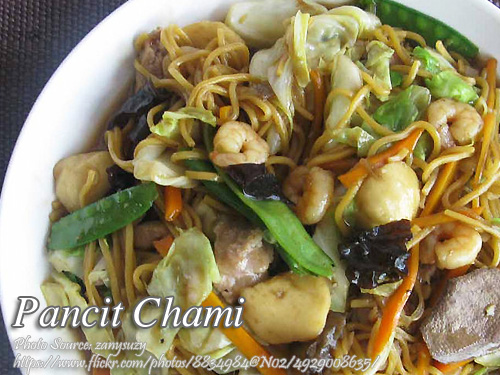

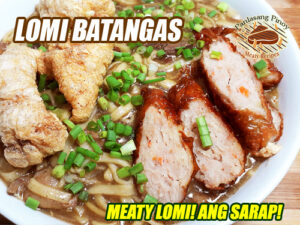
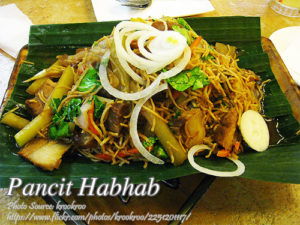
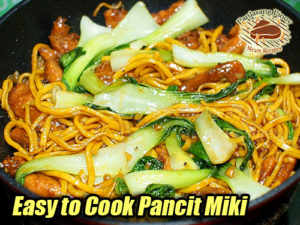
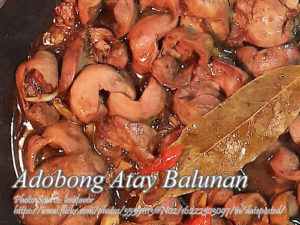
Hi Didith, thanks also for your comment and for visiting this blog!
Hi, I love chami and thanks for sharing this recipe!